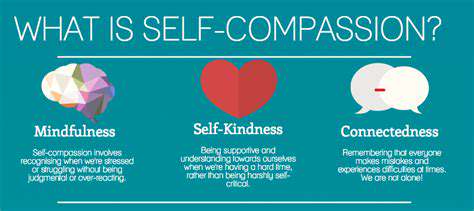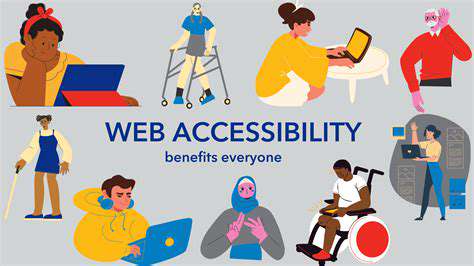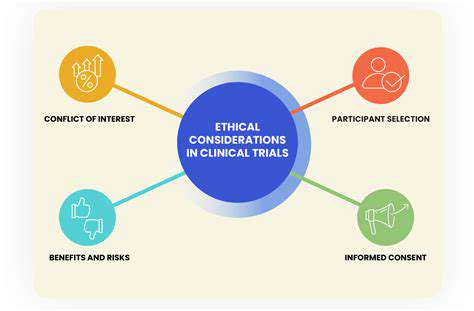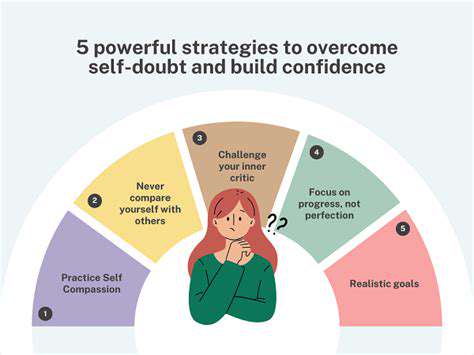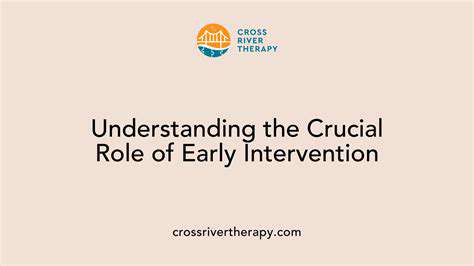Corporate Wellness: Creating a Culture of Psychological Safety
Leading by Example: Setting the Tone for Psychological Safety
Creating a psychologically safe environment isn't just about policies and procedures; it's fundamentally about leadership. Leaders who embody psychological safety demonstrate a commitment to open communication, vulnerability, and trust. They actively listen to diverse perspectives, acknowledging and valuing the contributions of all team members. This demonstrable trust fosters an atmosphere where individuals feel comfortable sharing ideas, even those that might be perceived as unconventional or challenging. This active listening, coupled with clear communication and a genuine interest in understanding different viewpoints, sets the stage for a more innovative and productive team.
When leaders prioritize psychological safety, they create a culture where mistakes are seen as learning opportunities rather than failures. This shift in perspective not only reduces fear of retribution but also encourages experimentation and risk-taking. Leaders who lead by example, by actively demonstrating these principles, encourage team members to follow suit. This ripple effect creates a powerful cycle of trust and respect that is crucial for fostering a positive and productive work environment.
Building Trust: The Foundation of Psychological Safety
Psychological safety hinges on trust. Trust is built through consistent actions, not just words. Leaders who consistently demonstrate integrity, fairness, and respect for their team members cultivate a strong foundation of trust. This includes actively seeking feedback, acting on constructive criticism, and ensuring that decisions are transparent and well-justified. Transparency in decision-making processes and clear communication of rationale help team members feel valued and understood, further strengthening the sense of psychological safety.
Leaders who model vulnerability create a space for others to do the same. Sharing personal experiences, admitting mistakes, and seeking help are all powerful demonstrations of vulnerability. This fosters a culture of authenticity and encourages team members to feel safe expressing their own thoughts and feelings, which is vital for innovation and high performance. Leaders who are open about their own struggles are demonstrating that it's okay to be human, and that seeking help and admitting mistakes is not a sign of weakness, but a sign of strength.
Encouraging Open Communication and Collaboration
Psychological safety thrives on open communication and collaboration. Leaders who actively encourage diverse perspectives and create opportunities for team members to share their ideas, concerns, and suggestions cultivate a culture of inclusivity. This involves actively seeking out and valuing input from all team members, regardless of their role or background. This includes providing opportunities for open dialogue, both formal and informal, and ensuring that all voices are heard and respected.
Promoting collaboration and cross-functional teamwork further strengthens psychological safety. Leaders who facilitate interaction between different teams and departments break down silos and foster a sense of shared purpose. This collaborative environment encourages knowledge sharing, innovation, and problem-solving. Creating opportunities for collaboration not only fosters psychological safety but also drives overall team effectiveness and project success.
Active listening, clear communication, and constructive feedback mechanisms are essential elements of fostering open communication. Leaders who create these mechanisms demonstrate a commitment to psychological safety and help create a space where everyone feels valued and heard.
Creating a culture of psychological safety requires intentional effort from all levels of leadership. By leading by example, building trust, and encouraging open communication, leaders can create a high-performing team that is empowered to achieve its full potential.

Read more about Corporate Wellness: Creating a Culture of Psychological Safety
Hot Recommendations
- AI Driven Personalized Sleep Training for Chronic Insomnia
- AI Driven Personalization for Sustainable Stress Management
- Your Personalized Guide to Overcoming Limiting Beliefs
- Understanding Gender Dysphoria and Mental Health Support
- The Power of Advocacy: Mental Health Initiatives Reshaping Society
- Building a Personalized Self Compassion Practice for Self Worth
- The Ethics of AI in Mental Wellness: What You Need to Know
- AI Driven Insights into Your Unique Stress Triggers for Personalized Management
- Beyond Awareness: Actionable Mental Health Initiatives for Lasting Impact
- Creating a Personalized Sleep Hygiene Plan for Shift Workers


